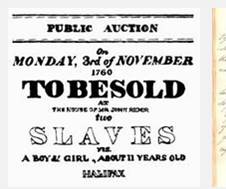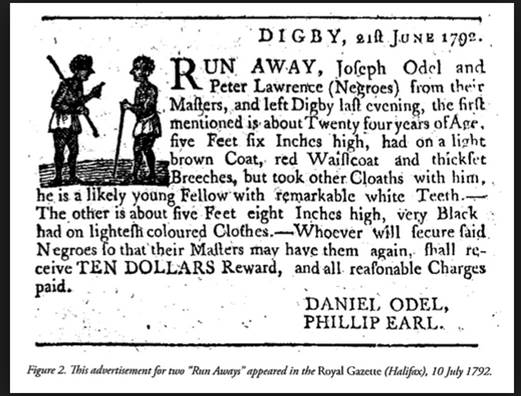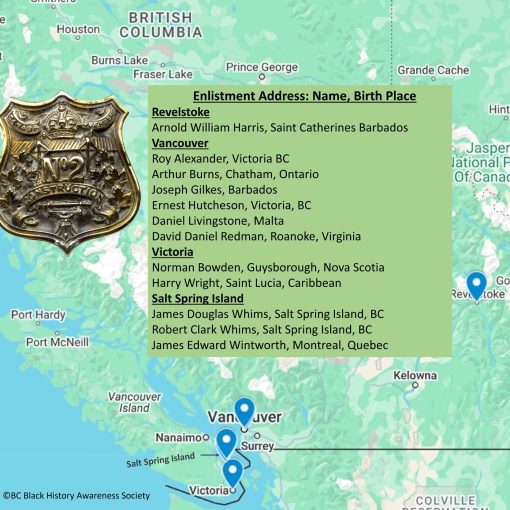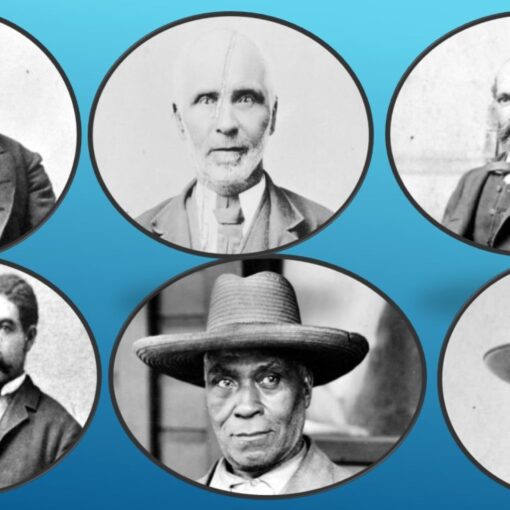August 1 1834 is important in Canadian history because the Slavery Abolition Act affected the lives of those enslaved and the lives of their descendants.
March 24, 2021: Canada’s House of Commons voted unanimously to officially designate August 1 Emancipation Day. It marks the actual day in 1834 that the Slavery Abolition Act of 1833 came into effect across the British Empire.
July 28, 2024: “Celebrations of Emancipation Day” The first celebrations in 1834 were held in notable Black communities – the towns of Windsor, Owen Sound, Amherstburg, and Sandwich, in Ontario, and provinces including New Brunswick and Nova Scotia. These celebrations included church services, picnics, parades, community dinners, and entertainment. In 2022 these celebrations were designated as a National Historic Event. The ceremony to unveil the plaque took place on July 28, 2024 at Cathedral Church of St. James, Toronto.
Enslavement and Emancipation in Canada

“Public Auction on Monday, 3rd of November 1760 – To be sold at the House of Mr. John Rider – two SLAVES a boy & girl, about 11 years old – Halifax”
30 years later on September 7, 1790 a Halifax newspaper advertises: “For sale: Some household furniture, a stout likely negro and sundry other articles.”
By 1790, an estimated 3,000 enslaved men, women and children of African descent had been brought into British North America. Government was not exempt from slavery’s influence. For example, six of the 16 members of the first Upper Canada Parliament and 14 of the 17 members of the second Parliament or their family members either enslaved Black people or were from slaveholding families.
The first colony in the British Empire to have anti-slavery legislation was Upper Canada, now Ontario. John Graves Simcoe, the first Lieutenant Governor of Upper Canada (1791–1796), passed an Act Against Slavery in 1793, which ended the importation of slaves in Upper Canada and manumitted the future children of female slaves at age twenty-five. BUT, it did not free a single slave. It was superseded by the Slavery Abolition Act 1833.
Upper Canada/Ontario was not the first of the British and former British possessions to enact legislation against slavery. Vermont abolished slavery outright in 1777, a full 16 years before Upper Canada’s partial abolition. And Vermont was followed quickly by Pennsylvania, Massachusetts, and several other northern states, well ahead of Upper Canada’s 1793 law. In 1787, the United States Congress outlawed slavery in the territories that would become the Midwest states.

“June 21, 1792. Run Away, Joseph Odel and Peter Lawrence (Negroes) from their Masters, and left Digby last evening, the first is about twenty-four years of age, five feet six inches high, had on a light brown coat, red waistcoat and thickset breeches but took other clothes with him. He is a likely young fellow with remarkable white teeth. The other is about five feet eight inches high, very Black, had on light colored clothes. Whoever will secure said Negroes so that their Masters may have them again, shall receive TEN DOLLARS reward, and all reasonable charges paid. Signed Daniel Odel and Phillip Earl”
The Slavery Abolition Act 1833 was enacted to abolish slavery throughout the British Empire (with the exceptions “of the Territories in the Possession of the East India Company”, the “Island of Ceylon” and “the Island of Saint Helena”; the exceptions were eliminated in 1843).
Only those enslaved under the age of six were freed. Enslaved people older than six years of age were re-designated as “apprentices” and required to work 40 hours per week without pay, as part of compensation to the enslavers.
Full emancipation was not achieved until midnight on July 31, 1838.
Emancipation does not mean Equity and Equality
This DAY is not just about honouring the past. It continues to have an effect on the lives of African Canadians today.
This DAY is about learning Canada’s collective history — not rewriting that history but telling a more complete history that includes the history of slavery. Even after emancipation, African heritage and history continued to be erased by methods of segregation, murder and systemic marginalization. Canadian history is taught in schools from a Eurocentric perspective that omits or minimizes the human rights violation against African Canadians. Recognizing the Act To Abolish Slavery is a step forward in recognizing African Canadian history as part of Canada’s story and teaches the next generation about the shameful and forgotten parts of the past that must not be repeated.
Slavery and segregation created circumstances of marginalization, a cycle of unequal access, lost opportunities and systemic poverty. Even after slavery was abolished in Canada, African Canadians continue to be devalued and left to survive with subpar health care, education and lack of employment opportunities. Communities were legally segregated, creating significant barriers to success. Even though segregation is no longer legal, African Canadians continue to experience systemic anti-Black racism through social exile, through significant economic disparities and through active discrimination. This history gives context to the current circumstance of poverty and violence. Where this context is not provided, poverty and violence are dismissed as individual issues rather than being accurately understood as systemic issues.
A big part of recognition of this DAY is talking about the many segments of Canada’s past that often do not make it into mainstream history-class curricula.
Taking the time to learn about our robust history reveals stories of resilience, victories and communities coming together. Recognition leads to understanding and education, which can then lead to action.
For far too long, the stories of slaves and their descendants have been kept alive solely in Black communities. It is time to teach all our children this part of Canada’s history so that we can begin the reparations necessary to address modern-day anti-Black racism and the impact of that racism. A step on this journey toward reparation would be an official apology to the descendants of slaves, to bring this issue to the forefront of Canadian consciousness.
Organizations like the BC Black History Awareness Society offset the failure to preserve and teach Black history and the marginalization of African Canadians by ensuring that all generations of African Canadians can learn and explore their heritage in publicly accessible events. Emancipation Day is a time to remember our past and remember the people who fought for freedom. It’s a time to remember those who did not survive. It’s a time to remember our ancestors, upon whose shoulders we stand.
This DAY is also about reflecting on our present, taking the time to examine the current circumstances and remembering why Black lives matter. When we talk about intergenerational trauma within African Canadian families, we are looking at generations of trauma stretching back to times of slavery, pre-1834. Tying our present to our past is a way of recognizing how slavery and segregation are actually the roots of anti-Black racism.
This DAY is also about preparing for our future. It is in this preparation and fight for equality that we will prepare the younger generation for success. The United Nations Decade for People of African Descent calls for recognition, justice and development. Within the recommendations for recognition, the United Nations suggests that communities “. . . promote greater knowledge and recognition of and respect for the culture, history and heritage of people of African descent, including through research and education, and promote full and accurate inclusion of the history and contribution of people of African descent in educational curricula . . . .” It also recommends that schools “ensure that textbooks and other educational materials reflect historical facts accurately as they relate to past tragedies and atrocities, in particular slavery, the slave trade, the transatlantic slave trade and colonialism, so as to avoid stereotypes and the distortion or falsification of these historic facts, which may lead to racism, racial discrimination, xenophobia and related intolerance, including the role of respective countries therein . . . .”
For those who endured enslavement for centuries, this emancipation would have brought hope and optimism that Canada would be a respectful home and offer meaningful opportunities for their descendants to live, work and flourish. Recent reports explain that Black Canadians continue to experience racism, discrimination and prejudice in all areas of Canadian society including education, healthcare, housing and the justice systems.
The United Nations International Decade for People of African Descent was declared in 2014 – the themes are Recognition, Justice and Development with the overall goal – to promote and protect human rights. A UN Working Group at the invitation of the Canadian government, visited Canada in October 2016. They met with federal and provincial government agencies including Global Affairs, Statistics Canada, Immigration, Public Safety, RCMP, National Defence, Correctional Services, and the Canadian Human Rights Commission as well as non-governmental organizations and academics. Their report, issued in August 2017, includes an Historical Overview of Canada, Demographics and 41 recommendations related to education, employment, housing, healthcare, justice systems, and policing.
The report concluded “Despite Canada’s reputation for promoting multiculturalism and diversity, the Working Group is deeply concerned about the structural racism that lies at the core of many Canadian institutions and systemic anti-Black racism that continues to have a negative impact on the human rights situation of African-Canadians.”
The report issued by Statistics Canada in January 2023 “Early career job quality of racialized Canadian graduates with a bachelor’s degree, 2014 to 2017 cohorts”. The article reports Today’s Black graduates are discriminated against in terms of jobs offered and pay received. “Two years after graduation, most racialized graduates reported lower employment earnings than their non-racialized and non-Indigenous counterparts.”
The United States: June 19 1865 – “Juneteenth” marks actual emancipation in the U.S.
The Emancipation Proclamation on January 1, 1863 did not mean immediate freedom from enslavement. Texas was the last and one of the largest bastions of institutional slavery, primarily because of the minimal build-up of Union troops. Plantation owners from areas relocated to Texas, forcibly taking the people they enslaved with them. Freedom finally came two years later on June 19, 1865, when General Gordon Granger led Union troops into Galveston Bay and declared the more than 250,000 enslaved Black people in Texas free by presidential decree. Celebrations broke out. Juneteenth was born and is the day emancipation is celebrated annually in many American communities.
Compiled from various sources.




